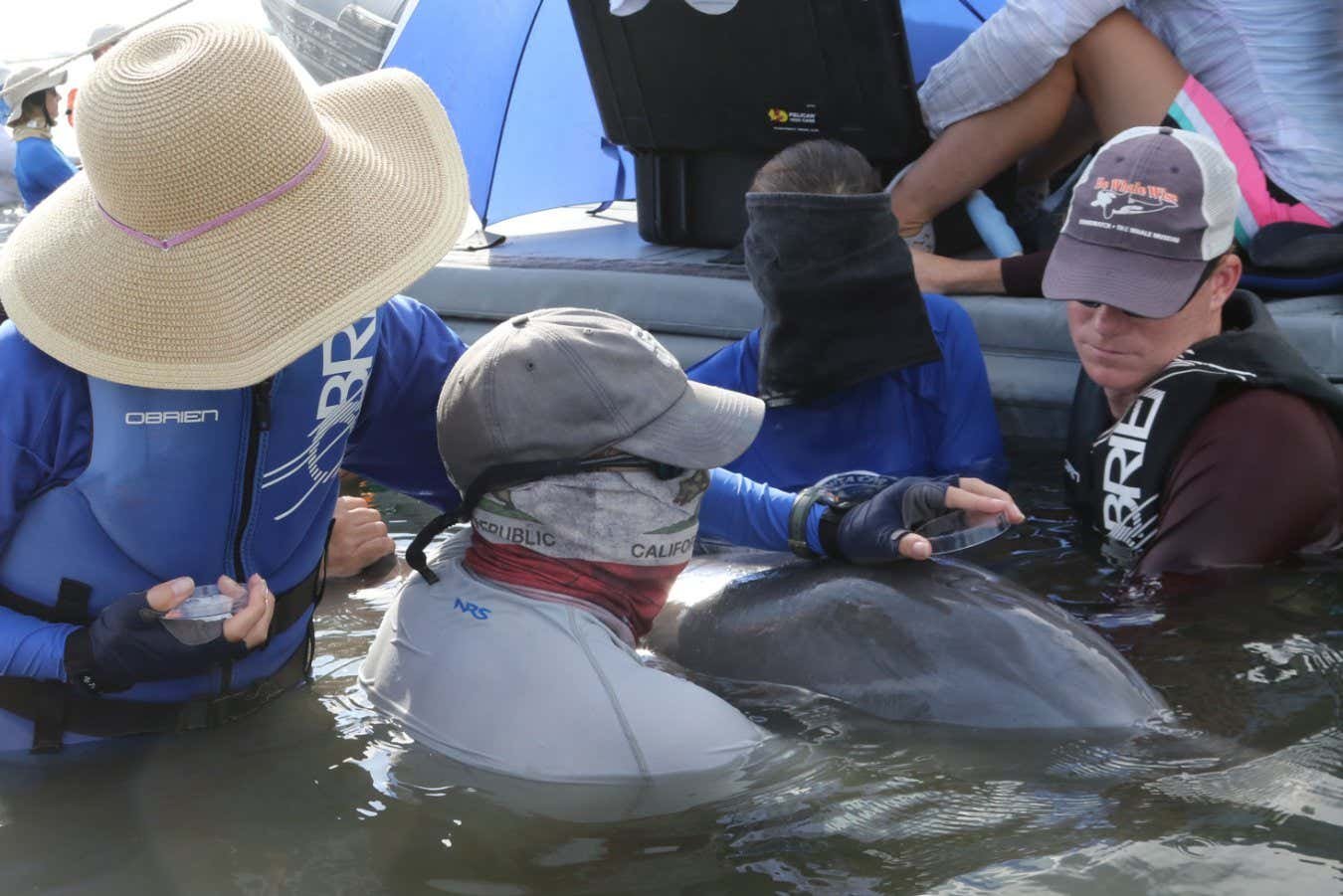
A wild bottlenose dolphin having a health assessment
Todd Speakman/National Marine Mammal Foundation, MMPA/ESA Permit No. 18786-03 and 24359 CC-BY 4.0
Dolphins in the Gulf of Mexico are inhaling microplastics, which could lead to lung problems.
Researchers at the College of Charleston in South Carolina carried out routine catch-and-release health assessments on five bottlenose dolphins (Tursiops truncatus) from Sarasota Bay, Florida, and six from Barataria Bay, Louisiana, in May and June 2023.
As part of the checks, they held a petri dish above the animals’ blowholes, looking for any tiny bits of plastic in their breath.
To make sure these dishes weren’t simply picking up microplastics floating in the air anyway, the researchers held a second petri dish away from the blowholes to collect control samples.
They found that all of the dolphins exhaled microplastics. Fifty-four such pieces were collected in total, each smaller than 500 microns.
This shows that dolphins are breathing in microplastics, says team member Miranda Dziobak. “These particles are everywhere, regardless of urbanisation and human development.”
Dziobak expects similar results would occur in other parts of the world. “Microplastics are super small and super lightweight, which makes them easy to transport,” she says. “Some researchers have shown microplastics can travel through the air for thousands of miles.”
The team didn’t investigate whether these particles were harming the dolphins, but previous research suggests they could be.
“What we know from human studies is that inhaling microplastics can lead to lung inflammation and other respiratory problems” says Dziobak. “Since we observed similar particles in the exhaled breath of dolphins as have been reported in humans, dolphins might also be at risk for lung problems.”
Nina Wootton at the University of Adelaide in Australia says she would be interested to know exactly how these microplastics could be impacting dolphins. “A lot of research indicates that although health impacts are known to occur, the microplastics have to contaminate the animal in quite high concentrations,” she says.
“Finding microplastics in marine species is now unfortunately a norm, and most specimens that are investigated commonly have them. Dolphins are often an indicator of marine ecosystem health, so this finding supports the fact that microplastics really are ubiquitous.”
Topics:
- whales and dolphins/
- Microplastics

Felecia Phillips Ollie DD (h.c.) is the inspiring leader and founder of The Equality Network LLC (TEN). With a background in coaching, travel, and a career in news, Felecia brings a unique perspective to promoting diversity and inclusion. Holding a Bachelor’s Degree in English/Communications, she is passionate about creating a more inclusive future. From graduating from Mississippi Valley State University to leading initiatives like the Washington State Department of Ecology’s Equal Employment Opportunity Program, Felecia is dedicated to making a positive impact. Join her journey on our blog as she shares insights and leads the charge for equity through The Equality Network.




